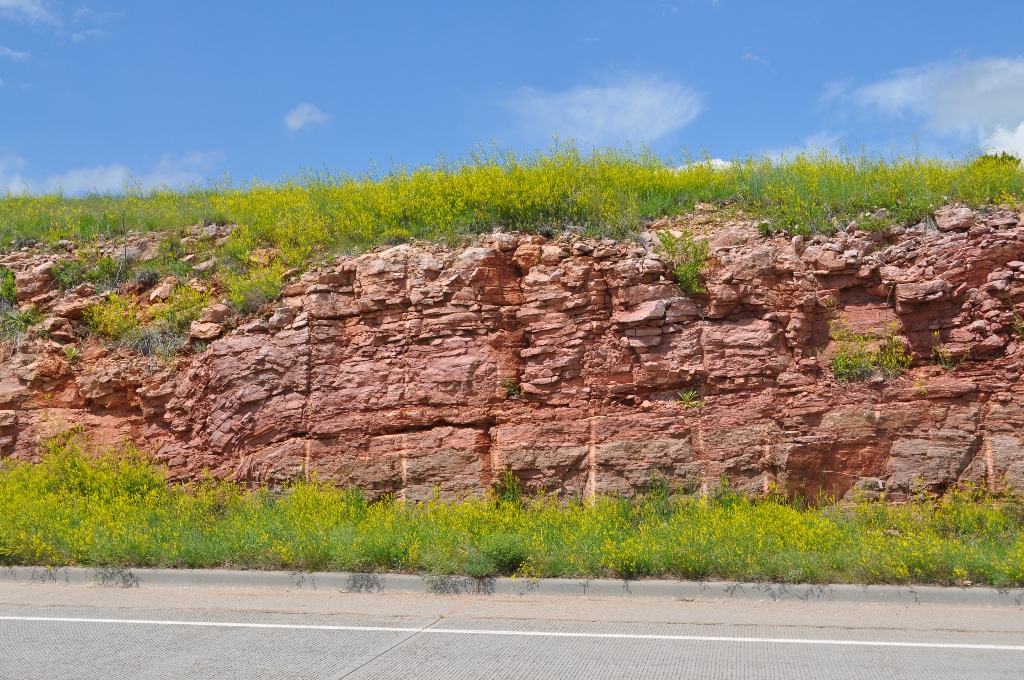
Geologic age: Permian
From the visitor center, drive 3.6 miles to this stop. Exit the south end of the visitor center parking lots, turn right onto route 385 South. Near the park's south boundary, you will see outcrops from road cuts. This is the Minnekahta Limestone.
The Minnekahta Limestone is a thinly bedded gray to purplish-gray slabby limestone. Caves rarely form in this limestone because it is so thinly bedded that the ceilings would collapse.
Look for prominent layers and folds. Note the differences between the Minnekahta and the Pahasapa Limestones.
From the visitor center, drive 3.6 miles to this stop. Exit the south end of the visitor center parking lots, turn right onto route 385 South. Near the park's south boundary, you will see outcrops from road cuts. This is the Minnekahta Limestone.
The Minnekahta Limestone is a thinly bedded gray to purplish-gray slabby limestone. Caves rarely form in this limestone because it is so thinly bedded that the ceilings would collapse.
Look for prominent layers and folds. Note the differences between the Minnekahta and the Pahasapa Limestones.
Is there something we missed for this itinerary?
Itineraries across USA

Acadia

Arches National Park

Badlands

Big Bend

Biscayne

Black Canyon Of The Gunnison

Bryce Canyon

Canyonlands

Capitol Reef

Carlsbad Caverns

Channel Islands

Congaree

Crater Lake

Cuyahoga Valley

Death Valley

Dry Tortugas

Everglades

Gateway Arch

Glacier

Grand Canyon

Grand Teton

Great Basin

Great Smoky Mountains

Guadalupe Mountains

Haleakalā

Hawaiʻi Volcanoes

Hot Springs

Indiana Dunes

Isle Royale

Joshua Tree

Kenai Fjords

Kobuk Valley

Lassen Volcanic

Mammoth Cave

Mesa Verde

Mount Rainier

North Cascades

Olympic

Petrified Forest

Pinnacles

Rocky Mountain

Saguaro

Shenandoah

Theodore Roosevelt

Virgin Islands

Voyageurs

White Sands

Wind Cave

Yellowstone

Yosemite

Zion